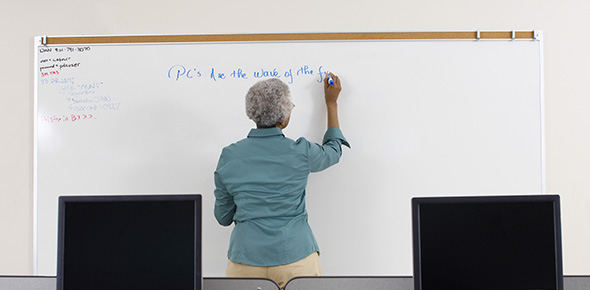Related Flashcards
Related Topics
Cards In This Set
| Front | Back |
|
Differentiate between kinds of indpendence (ex. emotional)
|
Emotional independence: involves progressing from emotional dependence on parents or on others, to increased independence while still being ablet ot maintain close emtional ties; it involves moving from a parent-child relationship to an adult-adult relationship.
Social independence: involves being self-directed rather then other directed. Other directed - strongly motivated by a group for social acceptance. Self directed - think things out for themselves and make decisions based on their personal interests (not becoming selfish). Economic independence: earning sufficient money to meets one's financial needs. Learning to limit one's desires and purchases to ability to pay |
|
Recognize I-Messages and parts of Gordon's No-Lose Problem Solving Tips
|
I-message: non-blaming messages that communicate only how the sender of the message believes the reciever is adversely affecting the sender. They do not provide a solution, not are they a put-down. (most effective way to communicate a feeling to teen)
No-Lose Problem Solving Tips: (each person in the conflict treats the other with respect, neither person tries to win the conflict by the use of power, and creative solution acceptable to both parties is sought) Two basic premises: (1) that all people have the right to have their needs met. (2) That what is in conflict between the two parties involved is not their needs but their solutions to those needs. Six Steps: 1. Identify and define the needs of each person 2. Generate possible alternative solutions 3. Evaluate the alternative solutions 4. Deciding on the best acceptable solution 5. Working out ways of implementing the solution 6. Following up to evaluate how it worked |
|
Identify information about anorexia nervous, bulimia, & compulsive over-eating
|
Anorexia Nervous: 'loss of appetite due to nerves' not true they are hungry they just chose not to eat. Steps:
1. Starts with a diet 2. Dieting creates feeling of control 3. Exhausting exercise is added 4. Health begins to fail Bulimia Nervous: 'ox like hunger' binge-purge cycle triggered not by physical hunger by by emotional upset. (consume 1,000 to 5,500 calories when actually eaten 50,000 throughout day) Steps: 1. A diet starts because person wants to lose weight 2. Overeating begins (triggered by emotion) 3. Guilt develops 4. Purging is discovered 5. A binge-purge habit takes hold Compulsive over-eating: irresistible urge to consume excessive amounts of food for no nutritional reason. Displays: 1. Frequent diet plan failures 2. Avoidance of health warning signs 3. Social Isolation 4. Nutritional ignorance 5. Selective eating amnesia 6. Overeating as a response to unwanted emotions |
|
Recognize two kinds of personalilty disorders (ex. borderline, histrionic)
|
Paranoid: a pattern of distrust and suspiciousness, such that others' motives are interpreted as malevolent
Schizoid: a pattern of detachment from social relationships and a restricted range of emotional expression Schizotypal: a pattern of acute discomfort in close relationships, cognitive or perceptual distortions, and eccentricities of behavior Antisocial: a pattern of disregard for, and violation of, the rights of others. Borderline: a pattern of instability in interpersonal relationships, self-image, affects, and impulsive Histrionic: a pattern of excessive emotionality and attention seeking Narcissistic: a pattern of grandiosity, need for administration, and lack of empathy Avoidant: a pattern of social inhibition, feelings of inadequacy, and hypersensitivity to negative evaluation Dependent: a pattern of submissive and clinging behavior related to an excessive need to be taken care of. Obsessive-Compulsive: a pattern of preoccupation with orderliness, perfectionism, and control |
|
Identify aspects of rational self-analysis
|
A. Facts & Events
B. Self-Talk C. Emotional consequences of B D(a). Camera check of A D(b). Rational self-talk challenges of B E. Emotional goals and behavioral goals for similar future events |
|
Have familiarity with theories of criminal activity (ex. differential association theory, anomie theory, deviant subcultures theory)
|
Theory of differential assiocation (Edwin Sutherland): asserts that ciminal behavior is the result of a learning process that primarily stems from small intimate groups--family, neighborhood peer groups, and friends
Anomie theory (Robert Merton): approach views delinquent behavior as resulting when an individual or a gan is prevented from achieving high status goals in a society Deviant subcultures theory (Walter Miller): asserts that some groups have developed their own attitudes, values, and perspectives that support criminal activity Control theories: 'why do people not commit crimes?' assume that all people would naturally commit crimes and therefore must be constrained and controlled by society from breaking the law. |
|
Recognize types of groups, such as recreation, therapy, focus groups, etc.
|
Recreation groups: provide activities for enjoyment and exercise
Recreation-skill groups: improve a set of skills while providing enjoyment Educational groups: help members acquire knowledge and learn more complex skills Task groups: formed to achieve a specific set of tasks or objectives Problem-solving and decision-making groups: subcategory or task groups Focus groups: specially assembled collection of people who respond through a semistructured or structured discussion to the concerns and interests of the person, group, or organization that inveited the particitpants. Self-Help groups: mutual aid and the accomplishment of a special purpose Socialization groups: develop or change attitudes and behaviors of group members to become more socially acceptable Therapy groups: generally composed of members with rather severe emotional or personal problems Encounter groups: refer to a group experience in which people realte to each other in a close interpersonal manner and self-disclosure is required |
|
Identify RAP framework for running multiracial groups
|
R - Recognize: crucial ethnic, cultural, and racial differences in any froup requires the leader to be both self-aware and aware of the racial dynamics of the group
A - Anticipate: how individaual members will be affected by racial issues prepares the leader to respond preventively and inventively when racial issues arise P - Problem-Solvie: when incidents related to racial issues do arise, the leader must intervene to reslove the issues. |
|
Recognize stages of group development outlined by Garland, Jones, and Kolodny; Tuckman; and Bates
|
Garland, Jones, and Kolodny:
1. Pre-affliliation - when group members guarded 2. Transitional - power of control 3. Intimacy - Function as a family 4. Differentiation - experiment with new behaviors 5. Seperation - members met goals ready to say good-bye Tuckman: Forming -> Storming -> Norming -> Performing -> Adjourning Bates: Re-occuring phase model (groups in different order) |
|
Know the difference between a democratic and authoritatian leader
|
Authoritarian: Leaders have more absolute power then democratic leaders, set goals and policies, dictate the activities of the members and set major plans
Democratic: Leadership is slow in decision-making and sometimes confusing, but frequently proves to be more effective because of strong cooperation that generally emerges with participation in decision-making |








